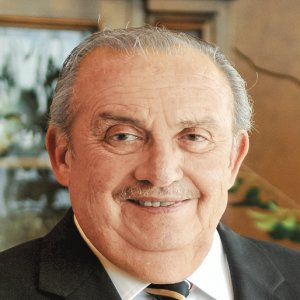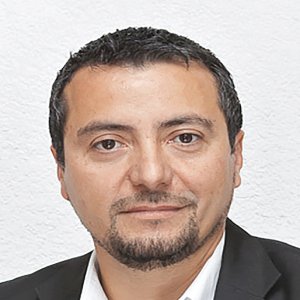Oldest Airline in Latin America Looks Forward

STORY INLINE POST
Q: What is Avianca’s target market and how are you capturing it?
A: Our goal is to be a full-service carrier, focused on serving Latin American customers. Our target market is corporate travelers who need a wide range of schedules to choose from. We offer reliability by incorporating the latest technology in our airplanes and additional perks such as a frequent flier program, complementary services to customize each experience, such as extra baggage, escorts for unaccompanied minors and transportation of sports equipment, among others to come.
We also offer an exclusive plan of discounts and elite benefits to enterprises that commit to work with us over time. With this full-service package plus technology and connectivity, we can provide a high-value product to the corporate market. We also cover the tourist market with key destinations such as San Jose in Costa Rica, Havana, Aruba, Curacao among many beaches in the Caribbean. To address these needs, we have a program called Avianca Tours, a successful product that was originally launched in Colombia and more recently was adapted successfully in Central America. We expect this distinctive feature of Avianca’s service to be implemented in Mexico in the near future.
Our strategy is to focus on improving connectivity throughout the continent, from Toronto to Buenos Aires, and to take advantage of our European gateways in Madrid, London and Barcelona. As the largest market in the Central and Caribbean region, Mexico is paramount for Avianca as it connects North and South America. For the Central American market, we are competing with Aeroméxico, Copa Airlines and LATAM Airlines. For that reason, it is important for Avianca to have a solid presence here in Mexico.
According to Mexican aviation authorities, Avianca moved approximately 750,000 passengers in 2015. Our goal is to increase that number this year by boosting connectivity from Mexico City and Cancun to the rest of Latin America. We offer attractive services from Mexico to our hubs in San Salvador, Bogota and Lima. So far, we have six flights daily from Mexico City, three to our largest hub in Bogota, two to San Salvador and one to Lima. This same plan operates from Cancun but on a smaller scale. This way we offer diverse destinations to our passengers, while supplying a superior product.
Q: The company moved to renew its fleet several years ago. How is that process going?
A: Avianca’s future is based on the fundamental pillar of technology, not only to offer good passenger experience but to optimize performance, fuel efficiency and to have secure and reliable operations. We are in the top 10 for airlines with the youngest fleets worldwide. Avianca committed to acquire over 100 airplanes several years ago to completely renew our fleet and we have received several aircraft per year since then. We also want to simplify our fleet because 15 years ago Avianca had more than six types of aircraft. This complicated maintenance and the acquisition of spare parts, resulting in higher costs. We now have three types according to the route. We use Airbus to cover short, medium and even long distances occasionally, Boeing and Airbus for transatlantic routes and turboprop aircraft for short-distance regional flights.
Our goal is to optimize our fleet to increase profitability while maintaining superior quality service for our customers. This vision is complemented by having the best talent in the region managing all customer interactions.
Q: Who is Avianca’s strategic partner for fleet renewal and which key features define this partnership?
A: Our strategic partner in this renewal is Airbus, which supplies most of our aircraft. The OEM offers a large range of airplanes for different purposes, from the Airbus A319 with 120 seats, to the Airbus A321 with 200 seats. A highly important aspect of this partnership is delivery schedule flexibility. To adapt our strategy to the uncertain market conditions regarding currency exchange and oil prices, Avianca decided to defer deliveries of some planes by several years. This decision allows us to manage our financial needs better while overall market conditions improve in Latin America. In this context, Avianca will receive four or five aircraft per year instead of an average of 10.
It is also important for us to forge stronger commercial associations, such as our membership with Star Alliance. We are a key player in this group of leading airlines worldwide that offers a seamless travel experience to the customer. The alliance covers over 1,000 destinations, supplementing our 105 destinations.
Q: What impact has the Internet had on the travel experience, especially in Mexico?
A: Mexican clients are using online travel agency platforms, such as Despegar.com, more frequently than other Latin American customers. About 60 percent of travelers in Mexico purchase their tickets through traditional travel agents, a number that has been steadily decreasing as online platforms grow in popularity among leisure travelers. For traditional travel agencies to remain solid contenders in the market, they need to continue offering extra benefits and managerial support, especially to corporate travelers who operate with limited travel budgets.
We must be more competitive in many aspects besides our prices. To ensure competitiveness, we work proactively to have a relevant presence with online travel agencies in the markets we serve. We constantly monitor and work with these sites to make sure we are a top choice for our destinations. The company also manages its own website with good promotions and easy accessibility for Internet users.
Q: How is Avianca dealing with economic challenges to ensure growth?
A: The airline business is both demanding and fragile. Any change in the exchange rate seriously affects revenue and demand, particularly Mexican subsidiary businesses from the US and in the leisure travel segment. Security issues also have dramatically slowed the Mexican travel sector. To face these challenges, Avianca observes the market closely and adapts to new trends. This year we have seen solid performance in some of our key markets as air traffic in Mexico and Colombia continues to grow. We expect more traffic between Mexico and Peru as a competitor has helped to create more demand.
We will create the Avianca of the future in Mexico by redesigning our relationship with travel agencies to stimulate the market with new incentives. The company also is working to target new customers, such as university students and the visiting friends and relatives segment. We have a distinctive combination of attractive fares and a world-class experience with the Boeing 787. With this next-generation aircraft, our goal is to offer a better flight experience with the flexibility of smooth transit in Bogota to reach key destinations like Buenos Aires, Santiago de Chile and our European gateways.
We have committed to being a carrier that not only takes passengers from one point to another but that ensures the high standards that travelers expect. We need to be efficient to achieve sustainability and viability for the future but we cannot sacrifice our relationship with the customer to maximize this efficiency. Instead, we push to find efficiencies in areas concerning internal processes and responsiveness to the markets.
























